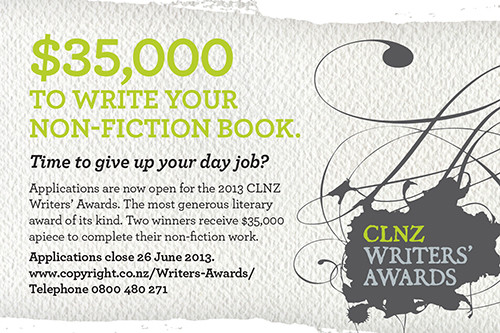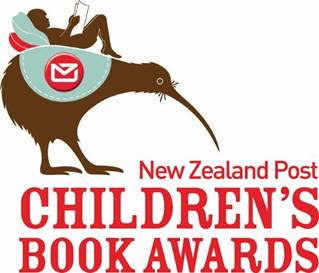Wendy Harrex was the first fulltime employee of Otago University Press (then University of Otago Press) when she moved to Dunedin from Auckland in 1993. Her task was to take a part-time operation and build it into a proper publishing house. In a farewell speech celebrating her role in the University, Wendy spoke of her life in publishing at Otago and beyond:

I came because I was ready for a new challenge and had the required skills. I had been publishing books for 22 years, in the UK and in New Zealand. I had played a part in establishing Oxford University Press’s New Zealand list and operated my own company for 11 years.
At that time, the New Zealand market was becoming overcrowded. There were three university presses already operating. Local offices of multinationals were developing strong lists. There were good independent publishers in various parts of the country.
At an early meeting of the Press committee we agreed that rather than create yet another New Zealand publishing house our objective was to build the Press into a significant publisher in the Asia-Pacific region, a press that the University would be proud of.
The one constant I could depend on was change. The day I started in the industry, 42 years ago, I was shown around both the printing works and the publishing offices of OUP in Oxford. I met the linotype compositor and another person who was producing text on a varityper, a pre-digital typesetting machine. In the drawing office, photo-generated type was being used for illustrations – very exciting. Hot metal was on the way out, cold type was on the way in.
For the books I subsequently worked on, long galleys of phototypeset text were cut up and pasted down to make book pages. Pictures were placed where the text needed them to be. A revolution!
Before I left the UK, I spotted an article in Time magazine with an image showing experiments in book layout using a computer screen. Yes, I thought, that is where I want to go.
I was part of a whole generation who came into publishing with these changes in technology. The new technology enabled us to put words and pictures on the same page in a way that had been difficult before. It enabled us to use colour differently – some 70s publications still blow your mind visually. It enabled us to seize control of publishing – we could start our own newspapers, magazines, books and publishing houses.
And the technology kept changing. I first used an accounting package to run my business in 1986. At Otago, I produced my first book in Pagemaker on a Mac the year I arrived at the Press. We soon took on publication of Kwok Wing Lai’s magazine Computers in New Zealand Schools. Working on the magazine, we found out about ICT, interactive whiteboards, the internet, websites, voice-operated programs.
Society was changing too, of course. Questions about national identity and race relations were bubbling to the surface. My publishing at OUP in Wellington and Auckland reflected that with Judy Binney’s Mihaia, Anne Salmond’s Eruera, and a children’s list of picture books and novels by Maurice Gee, Tessa Duder, and Gavin Bishop, amongst others. My own company was New Zealand’s only feminist press. At Otago we were soon publishing the Women’s Studies Journal, the Children’s Issues Journal, and the Bioethics Journal.
We needed to build critical mass for the Press as quickly as possible. Publishing these journals was a way of bringing new ideas and potential authors into the Press and finding new areas to publish in, publishing that no one else was doing. The resulting books sold well internationally.
My involvement in the wider book trade helped to grow the list as well. In the 90s, the biggest trade event each year was the Women’s Book Festival, held each spring. Otago published novels by Linda Burgess and Bronwyn Tate, who were toured nationally by the Festival and whose books sold out as a result. Alas, the festival came to an end before the 90s did, and our fiction list died with it.
When I was President of the Publishers Association, the industry was making a push into export, attending both the Australian Book Fair and the Frankfurt Book Fair each year. I also attended Asia Pacific Publishers Association meetings and displayed New Zealand books at two Tokyo Book Fairs.
The Press began buying rights to publish books in New Zealand, many of which sold well and created income that did not require book production time and effort on our part.
With a growing sense of national identity in society, there was a great need for books on Maori and Pacific subjects. Atholl Anderson’s edition of Herries Beattie’s Traditional Lifeways of the Southern Maori was the first of our books on southern Maori history, now a focus for part of our list. These and subsequent books on indigeneity and sovereignty enabled us to become the publisher of Linda Tuhiwai Smith’s Decolonizing Methodologies.
More recently, we have extended into the publication of Maori and Pacific art books, including such wonderful titles as John Pule and Nicholas Thomas’ Hiapo: Past and Present in Niuean Bark Cloth and Fiona Pardington’s The Pressure of Sunlight Falling.
We also took on a new kind of natural history publishing. Neville Peat and Brian Patrick arrived one day with an appealing project: a book on Wild Dunedin. As I was then our entire book production staff, I produced this book in Pagemaker, as well as the subsequent Wild Fiordland, Wild Central and Wild Rivers. It was a prize-winning series, with each new title winning or being shortlisted in the New Zealand book awards.
And following these books was a truly monumental undertaking for a small press – The Natural History of Southern New Zealand – which quickly became a classic.
Natural history opened the door to another new area, ecotourism. One day in the Catlins my family and I came across a guide leading a group of tourists. He was struggling along the path with a pile of books, ready to answer their questions. There has to be a better way, I thought. I commissioned Neville Peat to write The Catlins, and this became another book I produced in Pagemaker. Once we had the format, we were away – seven more books, mainly on South Island locations, followed.
History has also been an important part of our list. With the arrival of print on demand, we established the Otago History Series as an economic format for more academic writing about history. And we have been fortunate to publish some of the many substantial illustrated histories commissioned by the Ministry for Culture & Heritage, including Gavin McLean’s The Governors. More recently, biography/memoir has been a growing category.
And of course Otago became the publisher of the literary and arts magazine Landfall in 1994. Initially our task was to support editor Chris Price in maintaining its standing and readership, which meant finding new subscribers; now David Eggleton is theeditor.
Along the way, we have established the Landfall Essay Competition, the Kathleen Grattan Award for Poetry and the Seresin Landfall Residency for writers. In 2011, as our first online publishing venture, we established the blogsite Landfall Review Online which reviews New Zealand books. And we have kept publishing a small poetry list, specialising in southern poets, including former Poet Laureate Cilla McQueen.
The Press gained a UK/Europe distributor in 2006, and with our overseas sales growing significantly we decided to take on our own warehousing and distribution in NZ, assisted by sales reps Archetype Book Services. It has turned us into a unique operation amongst New Zealand’s university presses, giving us great information about our books, our customers and our sales, and has created work for the many wonderful student helpers we have employed over the years. So the Press is now very different from what it was in 1993 and has over two hundred titles in print.
As the internet took off, publishers found Google had plans for our books and Amazon began to undermine our local booksellers. Were book publishers and booksellers going to disappear altogether, we began to ask ourselves? What was going to happen to our New Zealand book culture and heritage?
As ever, where there are threats, there are opportunities. The Press has been working for some time on ebook production and distribution possibilities. I am departing at yet another exciting, interesting and challenging time in the industry!
One thing is certain, the world will keep changing.New Zealand is a tiny country on an increasingly unstable planet. We need our universities and our university presses, developing and promulgating the ideas and critical voices that help to keep us free, and preserving and growing the knowledge we need to survive as an independent, diverse, just and peaceful society.
Wendy Harrex
Robin McKenzie died in Raumati last month after a courageous battle with cancer. As a physiotherapist at the beginning of his career in 1956, a chance happening changed Robin McKenzie’s life and was the catalyst for curing pain in the lives of others.








 Early spring in Leipzig saw snow falling for the 14–17 March
Early spring in Leipzig saw snow falling for the 14–17 March  Throughout the four days of the fair, Sarah Ropata kept appointments she had made with publishers on various stands and approached others, presenting the NZ Rights Catalogue. “There was enough of everything in the list for something to be suitable for all of the publishers, and it generated a lot of leads,” she said.
Throughout the four days of the fair, Sarah Ropata kept appointments she had made with publishers on various stands and approached others, presenting the NZ Rights Catalogue. “There was enough of everything in the list for something to be suitable for all of the publishers, and it generated a lot of leads,” she said.

